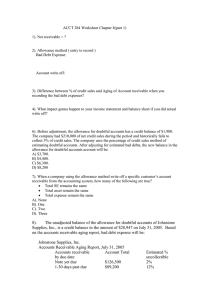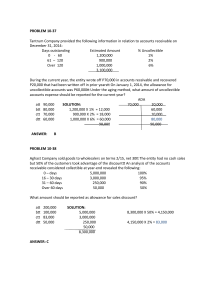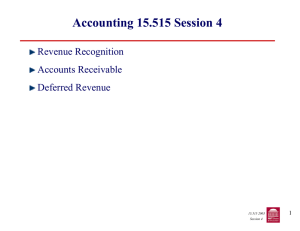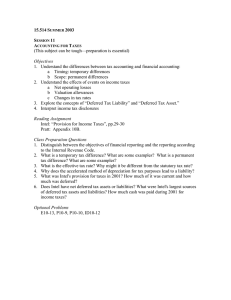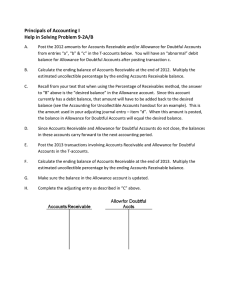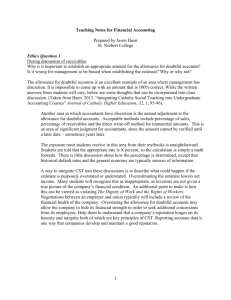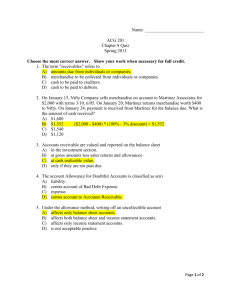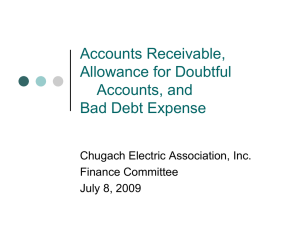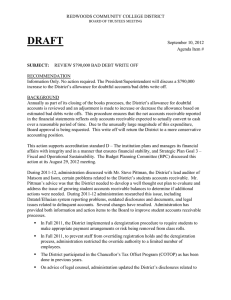15.514 S 4 R
advertisement
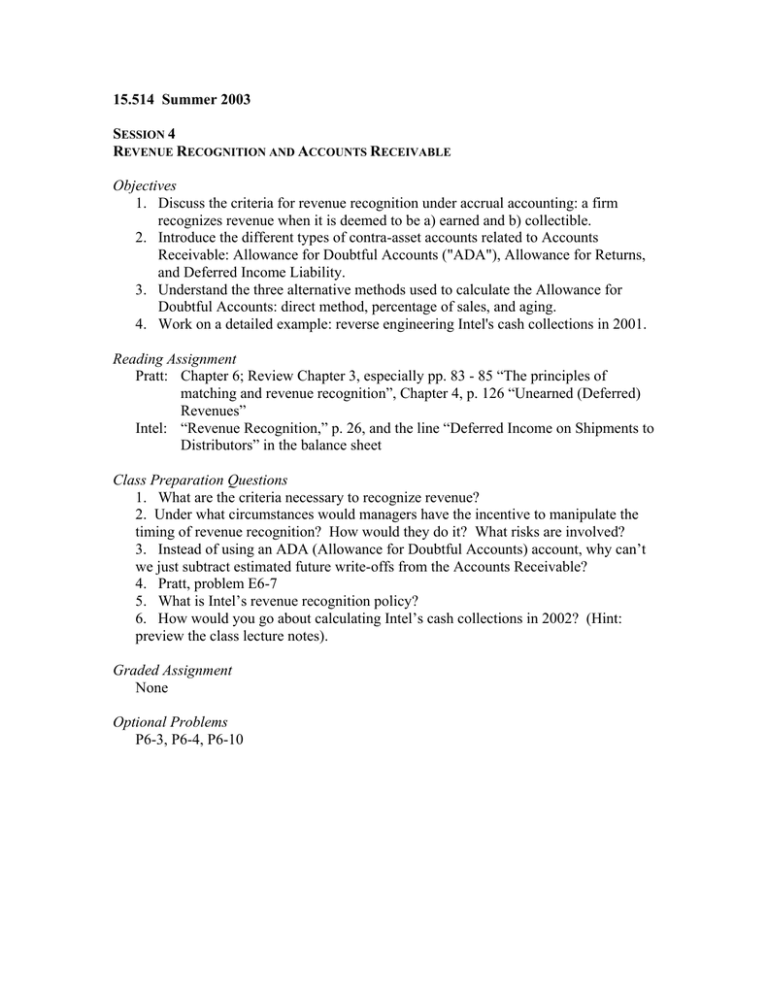
15.514 Summer 2003 SESSION 4 REVENUE RECOGNITION AND ACCOUNTS RECEIVABLE Objectives 1. Discuss the criteria for revenue recognition under accrual accounting: a firm recognizes revenue when it is deemed to be a) earned and b) collectible. 2. Introduce the different types of contra-asset accounts related to Accounts Receivable: Allowance for Doubtful Accounts ("ADA"), Allowance for Returns, and Deferred Income Liability. 3. Understand the three alternative methods used to calculate the Allowance for Doubtful Accounts: direct method, percentage of sales, and aging. 4. Work on a detailed example: reverse engineering Intel's cash collections in 2001. Reading Assignment Pratt: Chapter 6; Review Chapter 3, especially pp. 83 - 85 “The principles of matching and revenue recognition”, Chapter 4, p. 126 “Unearned (Deferred) Revenues” Intel: “Revenue Recognition,” p. 26, and the line “Deferred Income on Shipments to Distributors” in the balance sheet Class Preparation Questions 1. What are the criteria necessary to recognize revenue? 2. Under what circumstances would managers have the incentive to manipulate the timing of revenue recognition? How would they do it? What risks are involved? 3. Instead of using an ADA (Allowance for Doubtful Accounts) account, why can’t we just subtract estimated future write-offs from the Accounts Receivable? 4. Pratt, problem E6-7 5. What is Intel’s revenue recognition policy? 6. How would you go about calculating Intel’s cash collections in 2002? (Hint: preview the class lecture notes). Graded Assignment None Optional Problems P6-3, P6-4, P6-10
